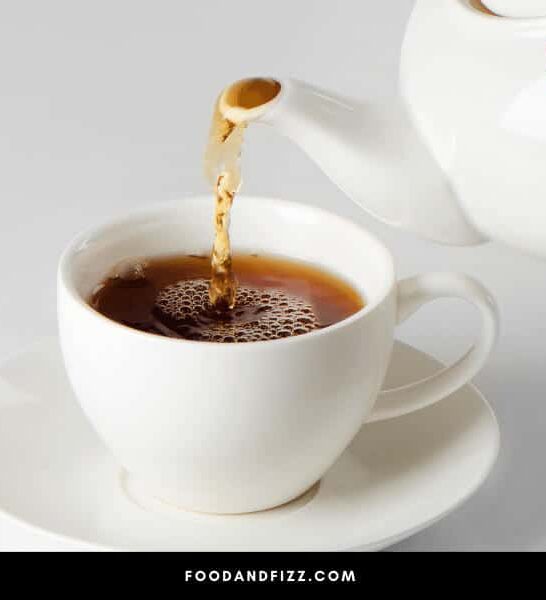Tea is enjoyed all over the world for its many nutritional benefits and its wide variety of flavors. In some cultures like China and Japan, tea is an integral part of daily life, and its proper preparation is transformed into an art form.
Intricate ceremonies and precise methods of brewing tea have made this elixir both a wonder and a curiosity for many. It is not inaccessible though, to regular folks like us. Even if we are not tea-brewing experts, we can brew good tea and enjoy it in the comforts of our homes.
If you are a regular tea drinker, you might notice certain characteristics of tea the more often you brew it. Aside from the pleasant aroma and the distinct flavor of the tea variant you chose, you might notice that sometimes, your cup of tea will have some white foam or bubbles on top.
It can be disconcerting to see, and you might think your tea has some sort of soap in it. (It doesn’t, but the logic wouldn’t be entirely wrong).
So, what is it? Why does tea foam?
Why Does Tea Foam?
Tea foams primarily because of what’s called “tea saponins”, which are compounds naturally found in tea leaves that protect them from insects and pests. Saponins are compounds that foam when mixed with water, like what soap does. How much foam is created depends on factors like the kind of tea leaves you are making, how the tea was produced and processed, how small the leaves are, and the method of brewing.
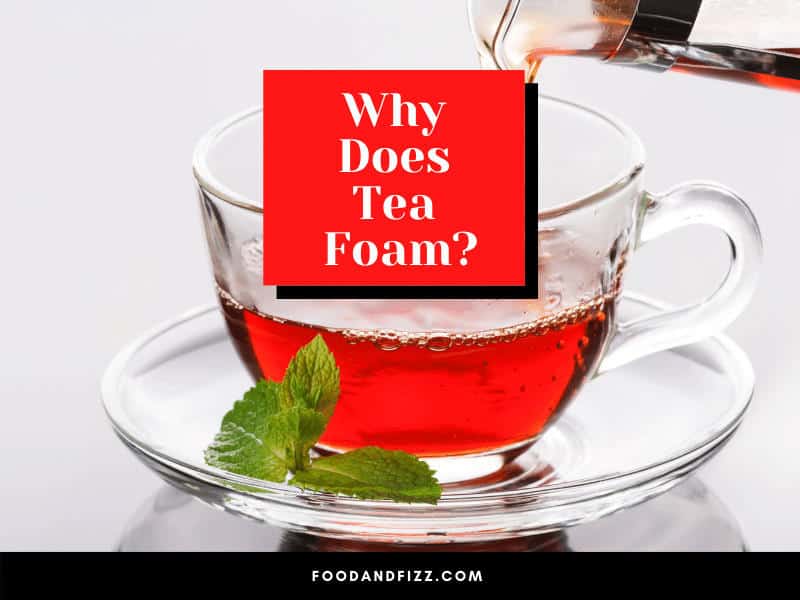
What is Tea? A Brief History
Tea is an amazing, health-supportive drink that can be enjoyed hot or cold and has been around for thousands of years. According to legend, it was first discovered in China about 5,000 years ago by a Chinese Emperor named Shen Nung.
The popular story says that this emperor, who had a keen interest in herbs, discovered tea when some leaves from a nearby tree accidentally flew into his cup of boiling water. The smell of the infusion intrigued him, and he promptly gave it the name “ch’a”, which means “to check and investigate”.
The widespread interest in tea grew for millennia. It was used initially for medicinal purposes until it grew as an art form and as a daily, integral part of Chinese culture.
Cultivation and planting eventually spread to Japan and other parts of the world, including India and some other parts of Asia. The Dutch and the English eventually introduced tea to Europe.
Today, tea is enjoyed all over the world not just for its many health benefits, but also as a daily drink whose preparation and presentation have evolved into a precise art form.
Tea can be enjoyed hot or cold. Iced tea is a common way to enjoy cold tea.
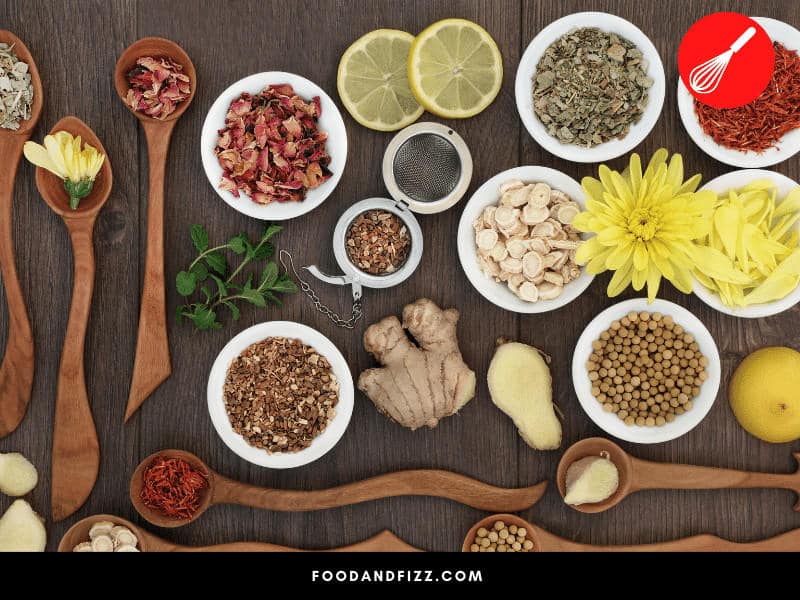
How is Tea Made?
Tea is traditionally made with the following steps.
1. Cultivation
Tea comes from a plant called Camellia Sinensis and is a plant that likes warmer and wetter climates that get a good amount of rainfall. Just like wine, the quality of the soil and the area where it is grown will affect the final flavor of the tea.
2. Harvesting
From growing, It would take about 3 years before tea plants would be ready for harvesting, and usually, only the top leaves from the top part of the plant are used to make tea leaves. This is why tea plants are also kept short, at waist height.
The leaves can either be hand-plucked, which makes them retain their natural sweetness and flavors until steeped and brewed, or machine-plucked, which is a faster method but also results in more broken leaves.
Chopped leaves would have more areas exposed to oxygen so when they are steeped, they would quickly release their flavors. Whole leaves take longer for their flavors to be released, often requiring multiple infusions.
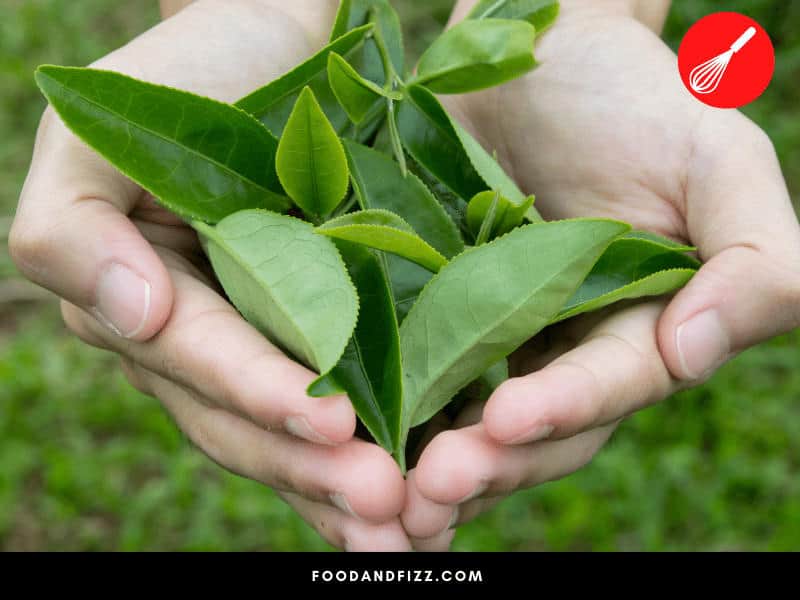
3. Sorting and Processing
Harvested tea leaves are brought in for processing. They are sorted, graded, and separated to prepare them for the next steps.
4. The Orthodox Method
Tea processed in this way would follow the next 4 steps:
Step 1: Withering
As the tea leaves contain a lot of water, they are subjected to a process of withering or drying to remove extra moisture content (by up to 60-70%) to make them easier to roll. They are usually laid out on a flat surface and cool air is passed through them for about 8-18 hours.
Step 2: Rolling
Tea leaves that have been withered can then be rolled better to break them up, and make them thin and wiry, releasing their natural oils and flavors and preparing them for the step of oxidation.
Traditionally, this is done by hand but to make the process faster, machines are used nowadays to speed up the process.
Step. 3: Oxidation
This process is what determines what color and flavor the tea is, as well as how strong it is.
Also known as fermentation, oxidation is a process in which the natural enzymes and components of the tea react with oxygen to produce their distinct flavor profiles.
Green teas and white teas are minimally oxidized, while darker and bolder teas like black teas are fully oxidized. Lightly oxidized teas are usually lighter and milder in flavor.
Step 4: Drying
Once the tea leaves have achieved their desired flavor, the process of oxidation is stopped by subjecting the leaves to hot air and drying them further, often leaving them with a moisture content of just 2-3%. The tea leaves can then be packed.
5. The CTC Method
The CTC or crush-tear-curl method follows the same processes as the Orthodox method of withering, oxidation, and drying. They only differ in the “rolling” step
In the CTC method, the leaves are rolled through machines with sharp teeth to break them down into multiple pieces. They “cut, tear and curl” the leaves, hence the name. Tea leaves processed in this way are ideal for teabags.
After this process, they go through the same steps of oxidation and drying before they are packed.
Why Does Tea Foam?
Similar to how soap bubbles and foams on contact with water, tea when brewed, also creates foam. This foam is caused by natural compounds in the tea called “tea saponins”.
Tea saponins are there to protect the tea plants from insects and pests. It is like an invisible armor that offers natural protection to the plants.
All plants have these tea saponins but how much foam is created depends on several factors.
1. The kind of tea leaves and the way of it is processed
The amount of tea saponins released depends on how the tea leaves are processed. The “rolling” step in the tea-making process affects this a lot.
The purpose of rolling is to release the natural oils and flavors and substances in the tea, and tea saponins are part of this. The more the tea leaves are rolled, the more tea saponins are released, and thus, more foam.
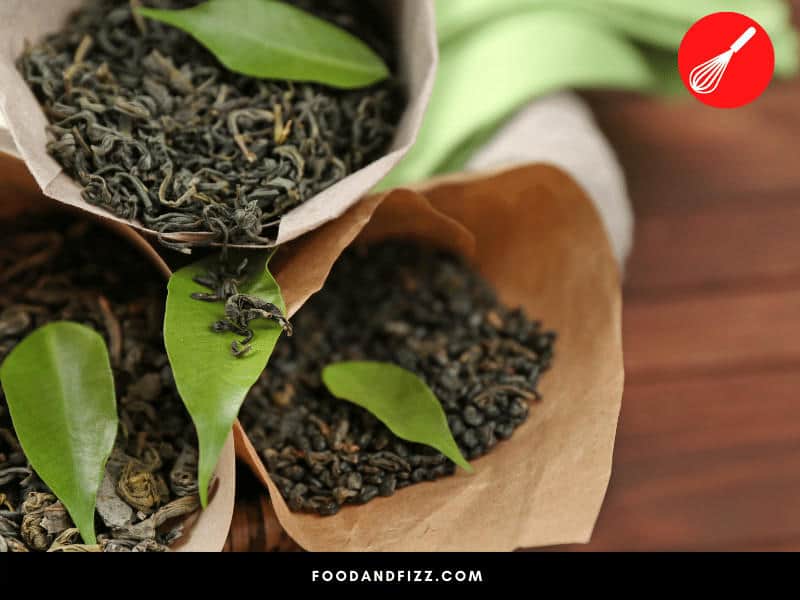
2. Broken pieces
The more broken tea leaves are present in the mix, the more surface contact with water. The more surface contact with water, the faster foam is created and released.
3. Method of infusing
“High Infusion” refers to the process of raising the water kettle above the teapot and intentionally adding water from a height. This process is usually done for green teas, which are minimally rolled, and thus usually do not have a lot of the foaming tea saponins released from the leaves.
If you do this for other types of tea that have more of the tea saponins exposed or released, it will create more tea foam in your cup.
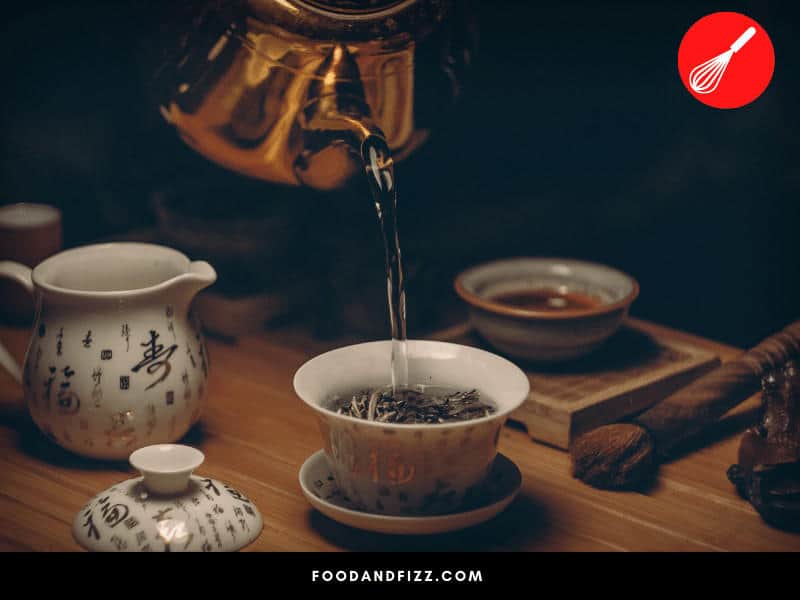
Is Tea Foam Toxic?
Tea foam is not dangerous and is not caused by pesticides or other added substances in your tea as some might be lead to believe.
It is caused by compounds naturally present in the tea. How much foam is in your cup depends on the kind of tea leaves, the way it was processed, and how you brewed it.
It is not unusual for tea to have this foam and it is not something you should be concerned about. That said, it is best to follow proper methods of brewing to ensure you get the most flavor and experience out of your teas.
What Are The Health Benefits of Tea?
Tea has a lot of health benefits including boosting immunity, helping with weight loss, fighting off aging, and protecting against cancer and heart disease. Green tea, in particular, contains antioxidants and polyphenols which fight off inflammation.
Tea aids with brain and heart health, helps to burn fat, and protects the body against multiple diseases.
With its many health benefits, it is no wonder that it has been used to treat ailments and improve health over the last couple of thousands of years.
Conclusion to Why Does Tea Foam?
Tea foam is caused by natural compounds present in the tea plants that protect them from pests and insects. How much your tea foams depends on how your tea was processed and how you infuse it.
Tea foam is not dangerous to consume and is not something you should worry about.
Frequently Asked Questions On Why Does Tea Foam?
Is Tea Foam Safe to Drink?
Tea foam is naturally created by the contact of tea saponins with water. Tea saponins are naturally occurring in tea and pose no danger when consumed.
Is Tea Healthy?
Drinking tea regularly can boost immunity, fight off aging and inflammation, and prevent illnesses like cancer and heart disease. Green tea, in particular, contains a lot of antioxidants and is minimally processed, making it one of the healthiest drinks you can add to your diet.
Does Tea Contain Caffeine?
The tea plant naturally contains caffeine, and how much is in your cup depends on the kind of tea leaves, and how it was processed. White tea would have the lowest amount of caffeine and black tea would have the highest.

